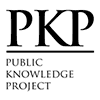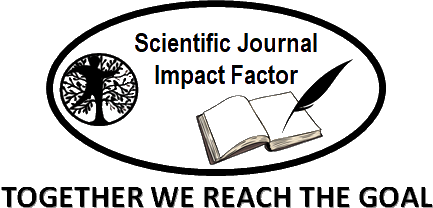Examining the Factors Influencing the Emergence of Street Children: A Systematic Review Approach
Abstract
Abstract
Objective: The importance of paying attention to the presence of children on the streets has become evident for many researchers and policymakers in various countries. Despite the presentation of multiple models in different countries, a comprehensive practical model for examining the factors affecting the emergence of street children in our society has not been conducted. This study aims to identify and examine the most important and influential factors contributing to the presence of children on the streets.
Methodology: This research is exploratory in terms of its objective and applied in terms of its use. Using a systematic review method, 81 related studies from 2001 to 2023 were identified, and 51 articles were selected as the sample for review.
Findings: The findings indicated that the emergence and prevalence of the street children phenomenon in different societies result from four fundamental factors, which include economic, social, familial, and individual factors.
Research Results: Based on this study, to reduce the presence of children on the streets, attention must be paid to the four essential factors, each of which are: economic, social, familial, and individual factors.
Keywords
Full Text:
PDFReferences
Afshani, A., Asgari-Nadushan, A., Heydari, M., & Najafabadi, M. (1391). Analysis of the Status of Street and Working Children in Isfahan. Journal of Applied Sociology, 23(48), p. 90.
Aghlima, M. (1386). The Phenomenon of Street Children in Tehran. Political Economic Quarterly, 239-240, p. 144.
Ahmadkhaniha, H., Torkman-Nejad, Sh., Hosseini, M., & Mohammad, M. (1381). Epidemiology of Depression and Sexual Abuse in Street Children. Research Institute for Humanities and Cultural Studies, p. 3.
Aksit B, Karanci N, Gundus Hosgor, A. (2001). Turkey Working Street Children in
Arshi M, Khoshnami M, Mohammadi E, Takaffoli M, Imami F.(2020).Evaluating Effectiveness of street children managing plan of Iran. Quarterly of social studies Researchin Iran, vol.9, No.4 p.828.
Azimzadeh Ardabili, F. (1382). The Phenomenon of Street Children and Solutions to Combat It. Research Institute for Humanities and Cultural Studies, pp. 102-109.
Ghasemi, E., Roshanfekr, P., Mehrabi, A., Faraji, B., & Wamiqi, M. (1397). Demographic-Social Characteristics of Street Children and Related Factors. Iranian Social Research Studies, 8(1), pp. 92-93.
Gholami, H. & Gholami, N. (1399). Government Crime: A New Approach in Analyzing Social Harms. Research Institute for Humanities and Cultural Studies, pp. 502-507.
Imani, N. & Nersisian, A. (1390). Anthropological Study of the Phenomenon of Street Children in Karaj. Social Issues in Iran, 3(1), p. 8.
Jafari, H. & Qamarani, A. (1383). Street Children as a Threat to Social Security. Research Institute for Humanities and Cultural Studies, p. 3.
Karnik,N.(2003).Categories have consequences:street children as Humanitration object.discertation abstracts international:section A.Vol64(3-A).P
Keshavarz Hadad, G., Nazarpour, M., & Kafshgari, M. (1392). Working Children in Iranian Households. Economic Policy Studies Journal, 10(1), p. 55.
Khoshnamani, M., Mohammadi, A., Arshi, M., Takfeli, M., & Noroozi, S. (1400). Understanding the Effects of Organizing Street Children Against Its Challenges. Social Work Research Journal, 6(21), p. 79.
Lemba, M.(2002), Rapid Assessment of Street Children in Lusaka, Fountain Of Hope, flame, Jesus Cares Ministries, Lazarus Project, Zambia
Mazloomzadeh, A., Jamalzadeh, A., & Shahabi, R. (1401). The Impact of Economy on the Elimination of Child Labor from a Jurisprudential Perspective. Journal of Economic Jurisprudence Studies, 4(1).
Mirzaei, M., Aftakhari, A., & Gholami, Sh. (1402). Factors Affecting the Inclination of Street Working Children towards Drug Retailing: A Study of Ilam and Kermanshah Provinces. Journal of Addiction Research, 17(69), p. 87.
Moghaddam, M., Moltafat, H., & Hozbavi, A. (1401). Exploring the Process of the Emergence of the Phenomenon of Street Working Children and Its Consequences in Ahvaz. Sociological Studies of Cities, 12(43), p. 4.
Moltafat, H., Shahriari, M., & Hozbavi, A. (1400). Analysis of the Status and Consequences of Street Children’s Habits from a Grounded Theory Approach. Social Work Research Journal, 7(25).
Najafpour, F. (1399). Examining the Relationship between Familial and Non-Familial Factors with Work and Presence of Children in the Streets of Kerman. Specialized Scientific Journal of New Research in Psychology, 1(2).
Najm Iraqi, L. (1382). The Colorful World of Street Children. Etemad Newspaper.
Onagh, N., Ghorbani, A., & Soorzehi, M. (1402). Sociological Study of the Phenomenon of Working Children. Journal of Applied Sociology, 34(91).
Prott, A., Aliuson, J., & Kris, J. (1385). Sociology of Childhood. Translated by Ali Reza Kermani & Ali Reza Ebrahimi Abadi, 2nd edition. Tehran: Talaye Publications.
Qaidari, H. & Yarahmadi, M. (1399). Analysis of Rural Child Labor Experience: Motivations and Consequences of Early Employment. Journal of Welfare Planning and Social Development, 11(41).
Rajabnejad, M., Shirvani, A., & Khazaneh Dary, Sh. (1385). Systematic Review of Evidence. University Excellence Center, Shahid Beheshti University.
Ramadan Khani, A., Yazd Khaasti, M., & Abdi, F. (1395). Policy Making for the Health of Street Children: Challenges and Solutions. Raz Medical Sciences Journal, 23(145).
Roshanpour, E., Roshanfekr, P., Moradi Nejad, A., & Nazari, V. (1401). Rapid Assessment of the Status of Street Children and Their Work Characteristics. Iranian Social Studies Journal, 15(4), p. 149.
Sedighi, Z. (1402). Social Pathology. Kabul: Saeed Publications, p. 66.
Shafie Abadi, A., Kolai, A., Pour Mousavi, S., & Ghashlaghi, K. (1402). Pathology of Child Labor in Tehran's Street Children: A Grounded Theory Study. Journal of Welfare Planning and Social Development, 15(54), p. 4.
Shahrokhi, M. & Ghaderi, S. (1394). Investigating the Decision to Work and Study of Working Children in Iran. Quantitative Economics Journal, 9(4).
Shalchi, V., & Mirza Babaei, S. (1394). Street Children's Experiences in Tehran from Welfare Organization Interventions. Journal of Welfare Planning and Social Development, 25, p. 203.
Shokouhi, A. (1393). Investigating the Role of NGOs in Empowering Street Working Children: A Case Study in Tehran's 12th District. Journal of Social Development Studies, 3(3), p. 34.
Soleimani, M. & Hajiani, A. (1392). Providing an Optimal Management Model for Organizing Working and Street Children. Cultural Management Journal, 7(22), p. 55.
Three Metropolitan Cities: A Rapid Assessment. International Labor Organization, Geneva
Wamiqi, M., Rafiei, H., Sajadi, H., & Rashidian, A. (1389). Systematic Review of Street Children Studies in the Past Decade in Iran (Poverty as a Risk Factor for Street Children). Journal of Social Welfare Research, 9(35).
Wamiqi, M., Rafiei, H., Sajadi, H., & Rashidian, A. (1390). Systematic Review of Street Children Studies in the Past Decade in Iran: Related Familial Factors and Consequences of Street Life. Research Institute for Humanities and Cultural Studies, p. 139.
Wamiqi, M., Roshanfekr, P., Dehjan, M., Rafiei, H., & Setareh Forouzan, A. (1393). A Mixed Study and Rapid Assessment of the Status of Street Children and Their Work Characteristics in Tehran. Iranian Social Issues Journal, 6(2), pp. 394-397.
World food program of United Nations Childrens fund&United Nation office for drug control and crime prevention.( 2001), Rapid situation Assessment Report on the situation of street Children in cairo and Alexandria including the Childrens Drug abuse and health Nutritional Status, WHO.
Yazdani, H. & Yazarlu, M. (1401). Analysis of Family Cultural Attitudes towards the Education of Working and Street Children. Rahpouyeh of Communications and Culture Journal, 1(4).
Zaregh, M. (1380). A Look at Street Children. Rehabilitation and Education Journal, 7(77).
DOI: http://dx.doi.org/10.18415/ijmmu.v12i4.6611
Refbacks
- There are currently no refbacks.
Copyright (c) 2025 International Journal of Multicultural and Multireligious Understanding

This work is licensed under a Creative Commons Attribution-NonCommercial-NoDerivatives 4.0 International License.
https://ijmmu.com
editor@ijmmu.com
facebook.com/ijmmu
Copyright © 2014-2018 IJMMU. All rights reserved.



































